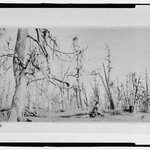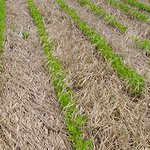Stephen Hawking celebrated his seventy fifth birthday on the 2nd July. We can all be delighted that he lived so long, and continues in robust health, after he was diagnosed to survive only three years. May he continue to "live long and prosper" as the fictional Vulcans say in Star Trek (a UK man can expect to live another 12 years if he reaches his 75th birthday, other things being equal). He's a brilliant physicist, everyone agrees, noted for his work in General Relativity and related areas. However he has never done any research in climate change AFAIK. The BBC interviewed him on his…
Environment

Stephen Hawking celebrated his seventieth birthday yesterday. We can all be delighted that he lived so long, and continues in robust health, after he was diagnosed to survive only three years. May he continue to "live long and prosper" as the fictional Vulcans say in Star Trek. He's a brilliant physicist, everyone agrees, noted for his work in General Relativity and related areas. However he has never done any research in climate change AFAIK. The BBC interviewed him on his birthday, asking what his views are on Trump's withdrawal, and as they say in their article:
"Prof Hawking said…

Last night was the premiere of "Food Evolution", a documentary on the science in our dinner, and I saw it with a large audience for the second time.
Wait, premiere? Second time? Which is it?
It's both. And that is how it became a tale of two cities. And maybe even a metaphor for the two Americas we now live in.
Two weeks ago I moderated a panel on communicating science and, more importantly, risk, at the University of Guelph, Canada's most prominent agriculture school. In the evening, there was a showing of "Food Evolution" in an auditorium there. I don't know how many people attended,…

The nighttime satellite photos of the Earth reveal much about the population distribution of the developed world through the intensity of the artificial lighting being observed. In the map of the eastern half of the U.S., some population patterns can be easily seen, such as the linear set of northeastern cities from Boston to Washington DC; a ring of cities surrounding the Appalachian mountains, and the north-south line from Dallas separating the eastern temperate prairie and western semi-arid great plains.
Image of the lights at night over the eastern U.S. with a light…

A paper has linked Monarch butterfly populations to glyphosate - but only when it was first used, and not when it was most heavily used. It also linked the populations to seasonal variation. That is to be expected, except since it's 2017, they try to claim that's climate change rather than wetter weather in some years.
Its obvious that land use impacts nature - that is why Republicans created the conservation movement over 100 years ago, and the Lacey Act also. Yet sometimes researchers who want to make the case put the cart before the horse. They engage in statistical data dredging. And that…

American chestnut trees were once among the most majestic hardwood trees in the eastern deciduous forests, many reaching 80 to 120 feet in height and eight feet or more in diameter.
The “then boundless chestnut woods” Thoreau wrote about in Walden once grew throughout the Appalachian mountains. They provided habitat and a mast crop for wildlife, a nutritious nut crop for humans and a source of valuable timber. Because of their rapid growth rate and rot-resistant wood, they also have significant potential for carbon sequestration, important in these days of climate change.
The…

No-till farming uses cover crops to conserve soil and suppress weeds but many vegetable producers haven't embraced it yet.
The reason is simple; small-seeded vegetable crops struggle to emerge through thick cover crop residues. A recent program sought to see how it might work better with string beans, a common staple of many dinners, and possessing larger seeds. In both Illinois and Washington, USDA-ARS agronomist Rick Boydston and University of Illinois ecologist Marty Williams grew vetch, rye, and a combination of the two cover crops before killing them with a roller-crimper—a machine…

A primitive, non-photosynthesizing microbe, Methanospirillum hungatei, which is thought to have existed since before the development of photosynthesis, possess genes similar to those that play a role in photosynthesis, finds a new study.
Photosynthesis, creating oxygen and carbohydrates such as glucose from solar energy, water, and CO2, is indispensable for many species on this planet. However, it is unclear exactly how or when organisms evolved the ability to photosynthesize. A team has discovered an evolutionary model for the biological function that creates CO2 from glucose in…

A lot has been said about the so-called "hiatus" in Global Warming starting in 1998, a major El Niño year. Perhaps the best illustration of the problem with the talking point is an animation titled "The Escalator", over at skepticalscience.com.
There's a more fundamental issue with it, however, than failing to recognize the difference between short-term weather fluctuations and long-term climate change. The talking point is based on faulty reasoning about trend analysis and burden of proof, as I intend to argue.
In order to show there's a change in a long-term trend, you need to statistically…

In 2006, former U.S. Vice-President Al Gore predicted that we only had 10 years to stave off our carbon dioxide doom, with plummeting yields in Africa, the Himalayas melting and other doomsday scenarios happening by 2016.
None of that came to pass, agriculture is doing better than ever, but another round of computer estimates claims that will change eventually. The models were confirmed by successfully predicting the past - a hallmark of numerical models before they can set about predicting the future - and they believe that though the ecosystem is complex, using just a few critical…